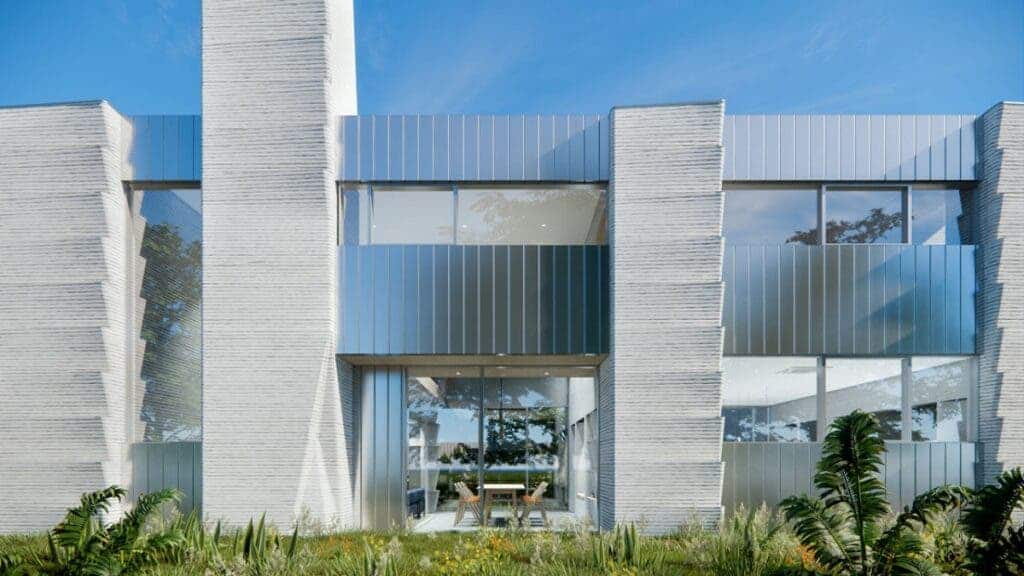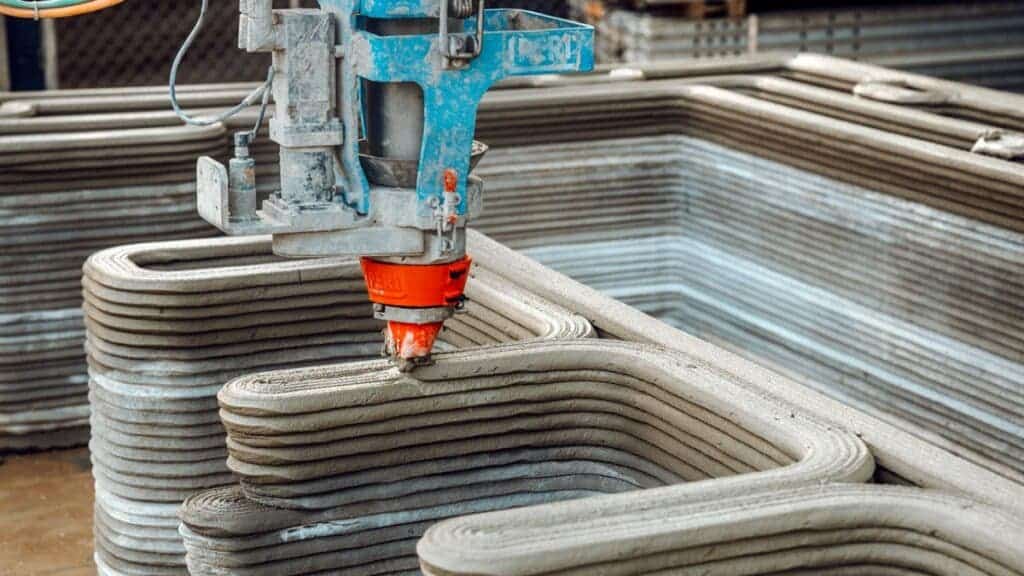Printing a house sounds like a pretty crazy concept, but with the quick advancements in the field of 3D printing, it’s not even restricted to the near future — it’s happening now. But researchers aren’t content with just showing that they can 3D print houses. Now, researchers are looking at new ways to blend innovative 3D printing with existing building techniques to make buildings durable, cheaper, and sustainable.

With this in mind, a team of Cornell researchers incorporated a design that blends conventional wood framing with 3D-printed concrete. Leslie Lok and Sasa Zivkovic built a two-storey, single-family home — the first multi-storey 3D printed building in the US.
“Our hybrid construction approach creates a building system that is structurally efficient, easily replicable, and materially responsive,” Lok said. “The project also highlights the exciting design potential of mass-customized architectural components to meet homeowners’ needs and to simplify building system integration.”
“These design efforts aim to increase the impact, applicability, sustainability, and cost-efficiency of 3D printing for future residential and multifamily buildings in the US,” Zivkovic adds.
The house is not completed yet, but based on recent reports, it seems to be progressing smoothly, though challenges still remain. For instance, to 3D print concrete structures, you need an industrial-sized 3D printer. In this case, the printer measures around 18 meters (60 feet) long, 9 meters (30 feet) wide, and 9 meters (30 feet) tall. Usually, these large printers stay in place during the process, but in this case, it had to be moved to complete the second storey — the first time this has been attempted. But being able to move the printer to complete a second storey means you now have the possibility of implementing new designs and scaling up construction, creating structures that are suitable for multifamily or other uses.

This couldn’t have come at a better time. Places like the US and UK are experiencing serious housing shortages, which is having both social and economic consequences. At the same time, prices for houses are constantly going up, which makes buying a house simply unaffordable for many people. The two researchers say 3D printing houses could help ease some of this crisis as it is quick and affordable.
“Apart from printing technology, the integration of printing with building design and building materials, and the streamlining of construction process are important aspects in the realization of such a project,” Zivkovic said. “We are using this project to demonstrate how 3D printing is not only market-ready, but also capable of building well-designed and high-performance architecture.”

But the researchers aren’t just eyeing ease of construction, they’re also trying to build sustainably. The design blends locally sourced cement that includes industrial byproducts like slag or fly ash and has a lower carbon footprint. Meanwhile, the wood framing is a renewable resource that comes from forest monocultures. This mixture of materials is also a new approach.
“There isn’t a design out there,” Lok said, “that thinks about multifamily housing using these two systems together.”
This isn’t the first time 3D printing has been touted as an innovative construction method. A year and a half ago, we noted the first sale of a 3D printed house in the US and the method seems to be getting more support every year. In Virginia, a company is building an entire neighborhood comprising 200 houses, and it says that the production will be cheaper and more sustainable than conventional methods.


